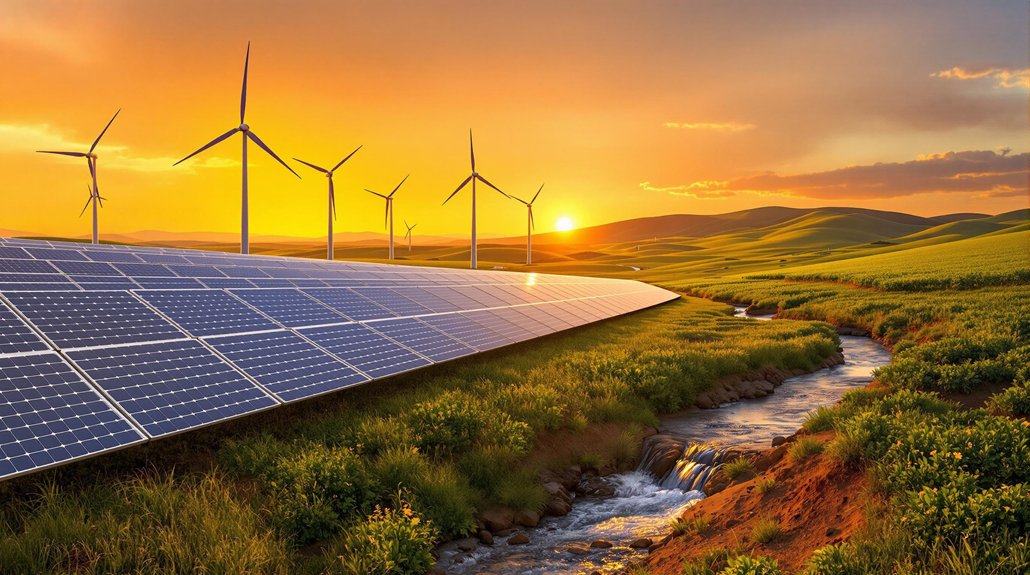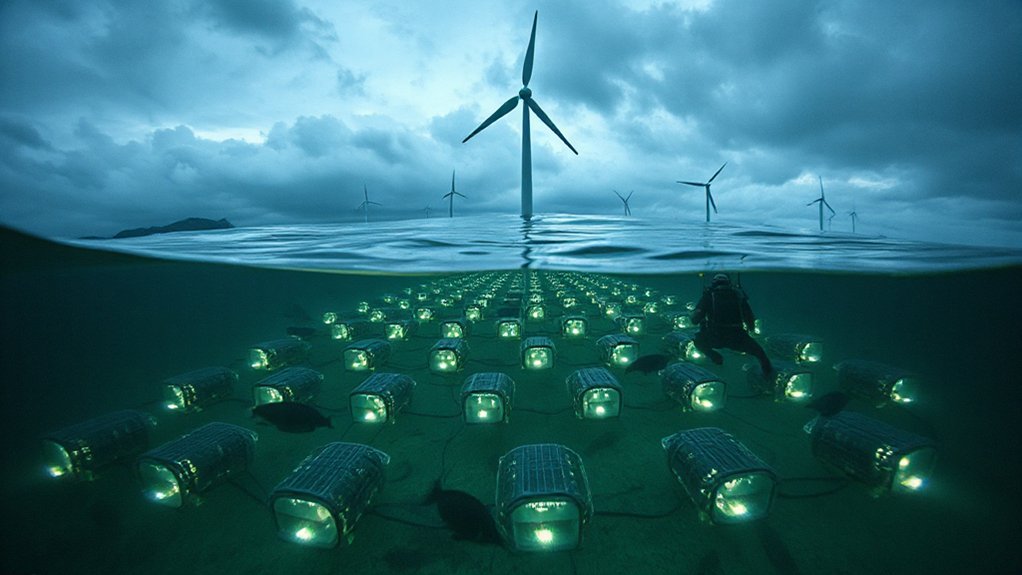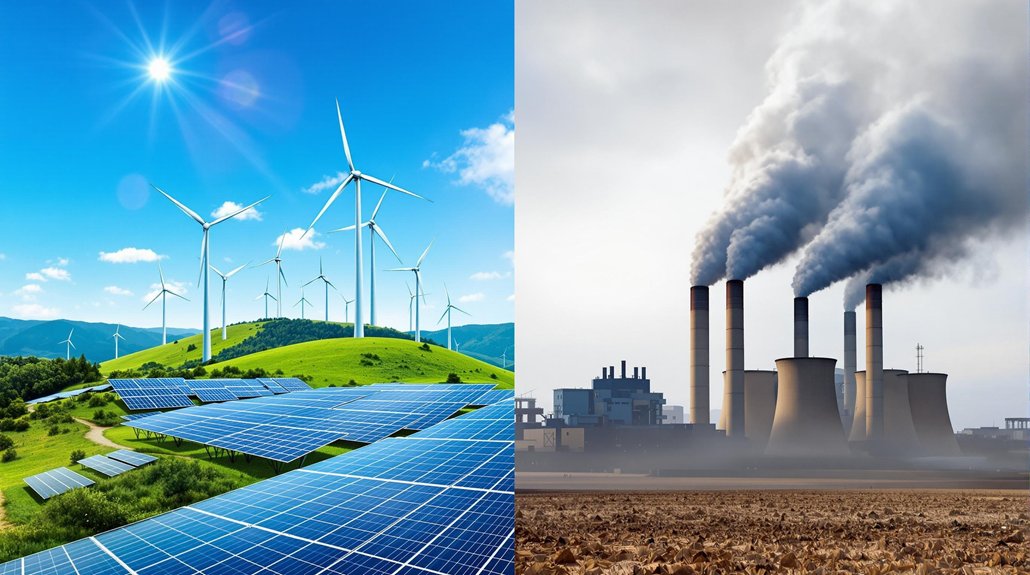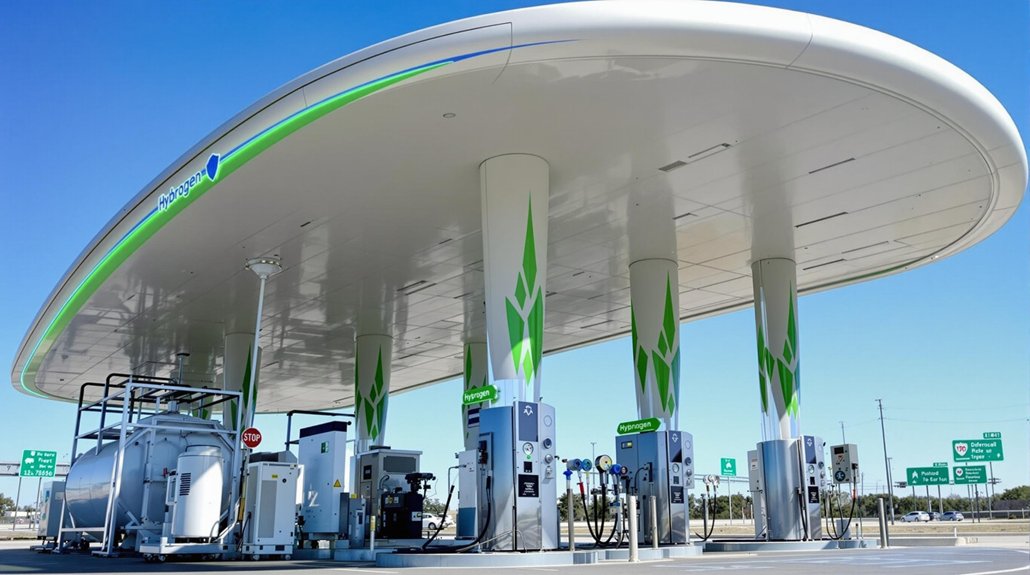Renewable energy comes from natural sources that won’t run out. These include solar, wind, hydroelectric, geothermal, and biomass energy. They produce much less pollution than fossil fuels and help fight climate change. Renewable energy creates jobs, reduces energy costs over time, and decreases dependence on imported fuels. Despite challenges like intermittency and high installation costs, global adoption is growing rapidly. The future of sustainable power continues to brighten with advancing technology.
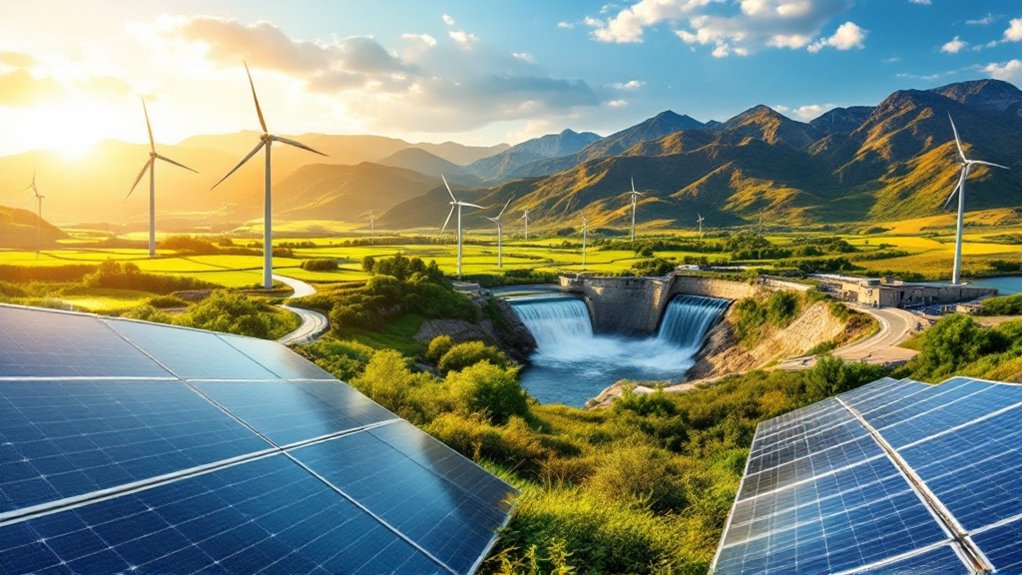
Renewable Energy
How is the world meeting its growing energy needs while protecting the environment? Many countries are turning to renewable energy sources that naturally replenish themselves. Unlike fossil fuels, these energy sources won’t run out and they create much less pollution.
The most common renewable energy types include solar power from photovoltaic cells, wind energy captured by turbines, hydroelectric power from dams, geothermal energy from Earth’s heat, and biomass energy from organic materials. Each source works differently but shares the same benefit—they’re sustainable and better for our planet.
Renewable energy comes in many forms, but all share one crucial advantage—they’re sustainable solutions for a healthier planet.
These clean energy sources offer significant environmental benefits. They reduce greenhouse gas emissions and produce minimal air pollutants. This helps combat climate change while preserving natural resources. Communities using renewable energy often see improved air and water quality. Transitioning to these sources is essential for limiting global warming to the critical 1.5C threshold.
The economic advantages are impressive too. The renewable energy sector creates new jobs and can reduce energy costs over time. Countries that develop renewable energy become less dependent on imported fuels. The industry also drives technological innovation and attracts investment in green businesses.
Renewable energy isn’t without challenges. Some sources like solar and wind are intermittent—they don’t produce power when the sun isn’t shining or wind isn’t blowing. Initial installation costs can be high, and some types only work in specific locations. Energy storage and grid integration remain complex issues. Responsible implementation is crucial as some renewable projects can disrupt wildlife habitats during construction and operation phases.
Despite these challenges, global adoption is growing rapidly. In 2021, renewable energy provided 28% of global electricity. China leads in capacity, while the European Union aims for 32% renewable energy by 2030. The United States saw 42% growth in renewable energy from 2010 to 2020, and India targets 450 GW capacity by 2030.
Technological advancements continue to improve efficiency and reduce costs. Modern solar cells capture more energy, and wind turbines are larger and more powerful than ever. Better battery storage systems help solve the intermittency problem. Flow batteries technology is particularly promising for large-scale grid stabilization and consistent energy distribution. Many governments offer incentives like subsidies, tax credits, and special tariffs to encourage further development and adoption.
Frequently Asked Questions
How Does Renewable Energy Impact Local Wildlife Populations?
Renewable energy can harm wildlife in several ways. Wind turbines kill birds and bats through collisions.
Solar farms clear land, destroying habitats for animals like desert tortoises. These projects fragment natural areas, disrupting migration patterns. Some species face population declines, especially endangered ones.
However, careful planning helps reduce these impacts through better site selection and wildlife-friendly designs.
What Are the Upfront Costs of Residential Renewable Energy Systems?
Residential renewable energy systems require significant upfront investment.
Solar panel installations typically cost $15,000-$25,000 before incentives. Wind turbines range from $15,000-$75,000 depending on size. Geothermal heat pump systems run $10,000-$30,000 installed. Battery storage adds $7,000-$14,000 to any system.
While costs are substantial, federal tax credits cover 30% of most renewable investments. Payback periods generally range from 5-10 years for solar and geothermal systems.
Can Renewable Energy Provide Baseload Power Without Storage?
Renewable energy can provide baseload power without storage through several methods.
Geothermal plants operate continuously like traditional power plants.
Hydroelectric dams deliver consistent electricity as needed.
Biomass and biogas facilities run 24/7.
Concentrated solar thermal with molten salt maintains output after sunset.
Grid managers also combine wind and solar from different regions, as they often produce energy at complementary times.
Natural gas plants can fill temporary gaps when necessary.
How Do Different Countries Incentivize Renewable Energy Adoption?
Countries worldwide use different methods to promote clean energy.
Germany offers guaranteed payments for solar power producers.
The US provides tax credits covering 30% of installation costs.
China gives low-interest loans for green projects.
India runs subsidy programs to reduce upfront costs.
Many nations use renewable energy quotas, streamlined permits, carbon pricing, and competitive auctions to make clean power more affordable and accessible.
What Rare Materials Are Required for Renewable Technology Manufacturing?
Renewable technology depends on several critical materials.
Rare earth elements like neodymium and dysprosium are crucial for wind turbine magnets.
Battery metals including lithium, cobalt, and nickel power energy storage systems.
Solar panels require silicon and silver.
Copper is essential for all electrical components.
China dominates production of many of these materials, creating supply chain concerns as global demand rises with renewable energy growth.
